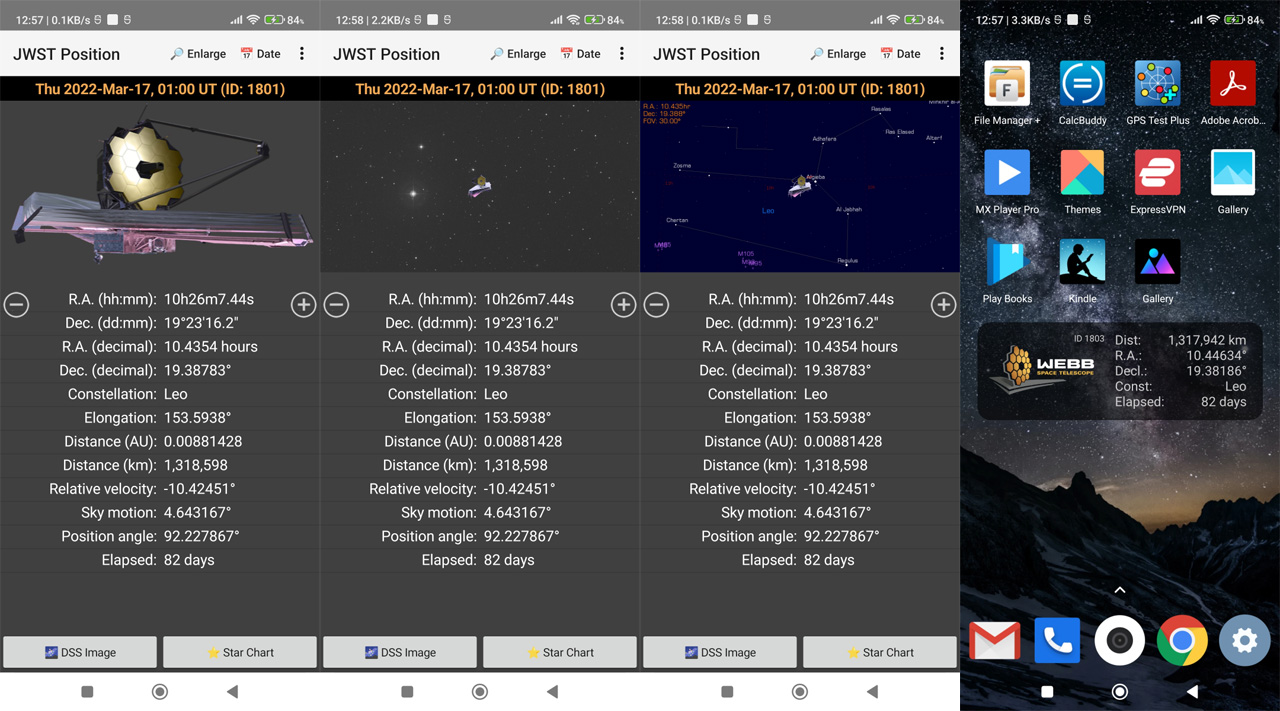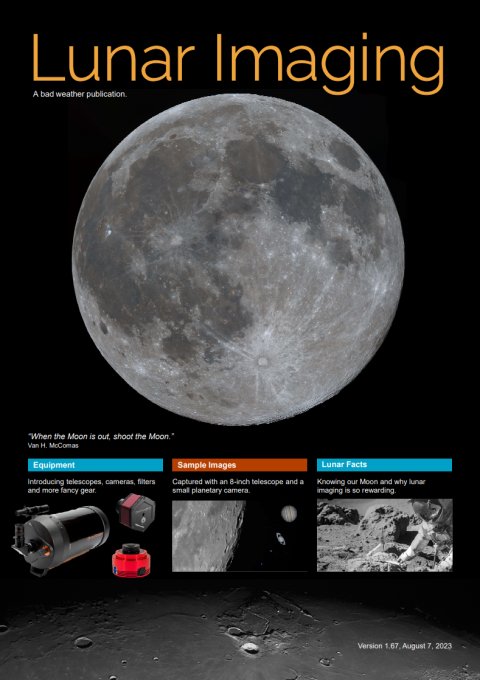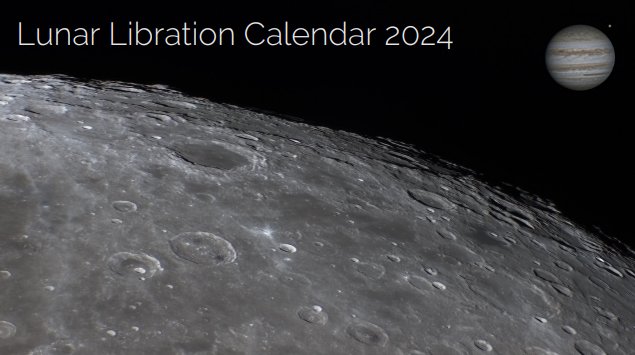Non-Commercial Software Disclaimer
All applications are cost-free, private developments and uploaded to this site merely for sharing with the astronomy community without obligations and liability assumed whatsoever. The software is tested with a smartphone running Android 12 and a tablet running Android 9.
The display layout can vary with screen size and aspect ratio as well as with Android versions. The author cannot test and confirm screen layouts for all smartphones and tablets. Please send a screen snap should you encounter layout issues.
The software does not contain any ads or in-app purchases and is child-safe. All software is work in progress and runs under Android devices only.Users need to be familiar with the installation of applications from "unknown sources". Download an APK file and pick it with a File Manager. Then click to install. Follow the prompts of the Android operating system.
The author invests most time in coding, in that manuals and Help pages are not fully implemented. The software is believed to be intuitive, please tap your way through.
Lunar Imaging
Scope
The primary purpose of this application is planning of lunar imaging sessions with focus on computing libration angles. The computed data is not as precise as NASA’s but fully sufficient for amateur purposes. The use of this software requires basic familiarity with Android devices and astronomy.
Disclaimer
Software for hobbyists, such as stargazers, fishermen, gardeners, plant growers, historians, hikers, photographers, sailors, campers, golfers, nature lovers and vampires. This software is NOT intended for military, religion, astrology, horoscopes, superstition, etc.
DO NOT RELY ON THIS SOFTWARE DURING CRITICAL SITUATIONS!
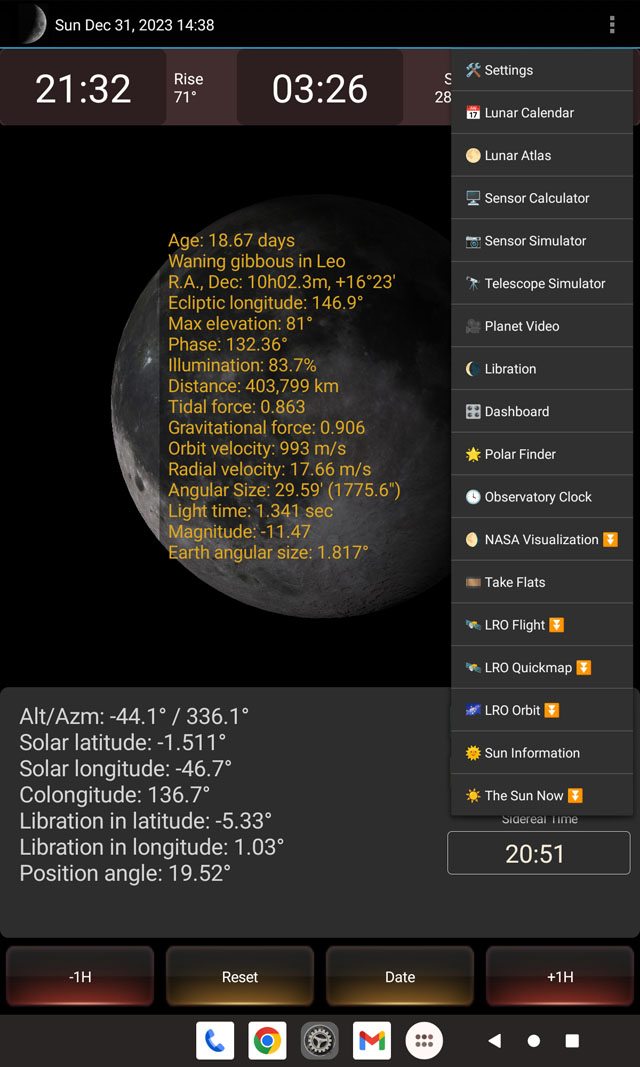
Features v1.27
- OpenGL lunar globe (upright and diurnal).
- Crosshairs overlay for visualization of libration.
- Rise, transit and set time (local).
- Imaging-relevant data updated every 10 seconds.
- Lunar ephemeris data.
- One-hour interval shift.
- Fixed date and time selection.
- Lunar calendar with major phases.
- Interactive Lunar Atlas
- Sensor Calculator
- Sensor Simulator
- Telescope Simulator
- Planet Video Duration
- Libration Data for the year.
- Lunar Dashbard
- Polar Finder
- Observatory Clock
- White scren for taking flats
- Links to NASA's LRO
- Level Meter (if device has sensors)
- Compass (if device has sensors)
- NASA Visualization (Moon)
- Latest Sun Images
- Two associated Widgets
Installation
Copy the downloaded *.apk to an directory or root of your phone or SD card. Then use a File Manager app to locate and tap on the *.apk. If your device refuses to install you need to allow “Install from unknown sources” as prompted. This app can be trusted as long as downloaded from this link:
In case of error when updating the app, please open "App Info/Clear Data/Clear all data" in Android Settings. The latest Android versions offer access to App Info by "Tap and Hold" on the app icon on the home screen.
Getting Ready
At first use, the application prompts for local geographic coordinates to be input manually or with GPS. Please turn the device to landscape mode should the manual input fields be truncated at the right. When using GPS, your Android system will ask you to grant permission for Location access. If you prefer to enter manually, you can select to deny. GPS is used for Settings only. Be sure to disengage GPS if not needed for other purposes.
Other Stuff
Martian Time
This application is inspired by NASA/GISS's "Mars24 Sunclock" https://www.giss.nasa.gov/tools/mars24/. The technical notes on NASA's website also apply to this application. https://www.giss.nasa.gov/tools/mars24/help/notes.html
Also interesting:
Wikipedia, Time Keeping on Mars.
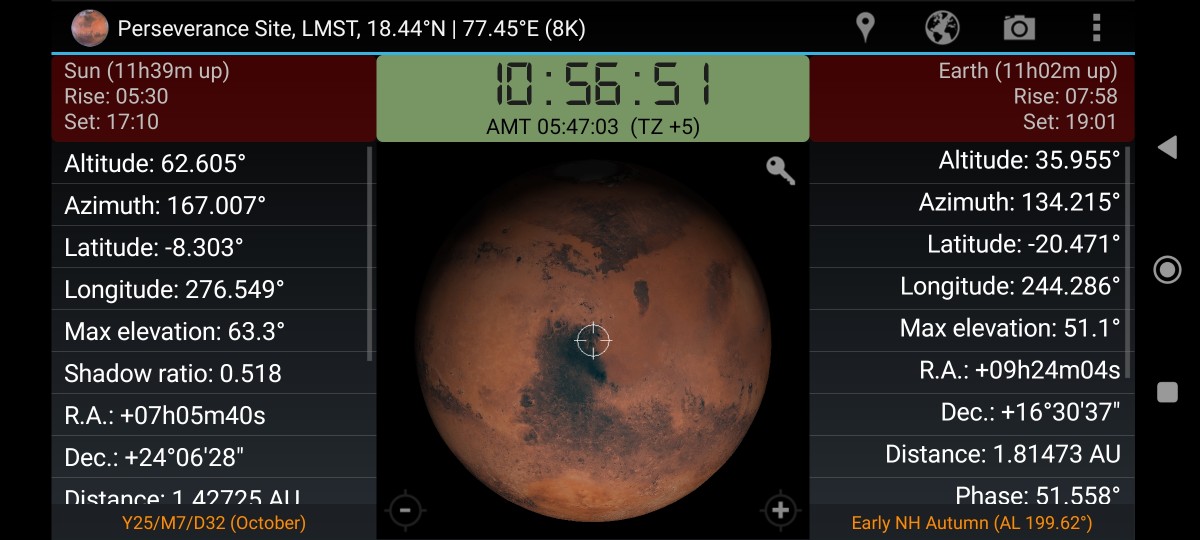
This application for Android devices is for Mars nerds who want to know time as as well as Sun and Earth data as observed from any place on the planet Mars. It relies on the accuracy of the device's clock. The app includes a database of over 50 martian locations and lander sites. In addition, when unlocked, the Mars globe can be freely rotated to center on any location.
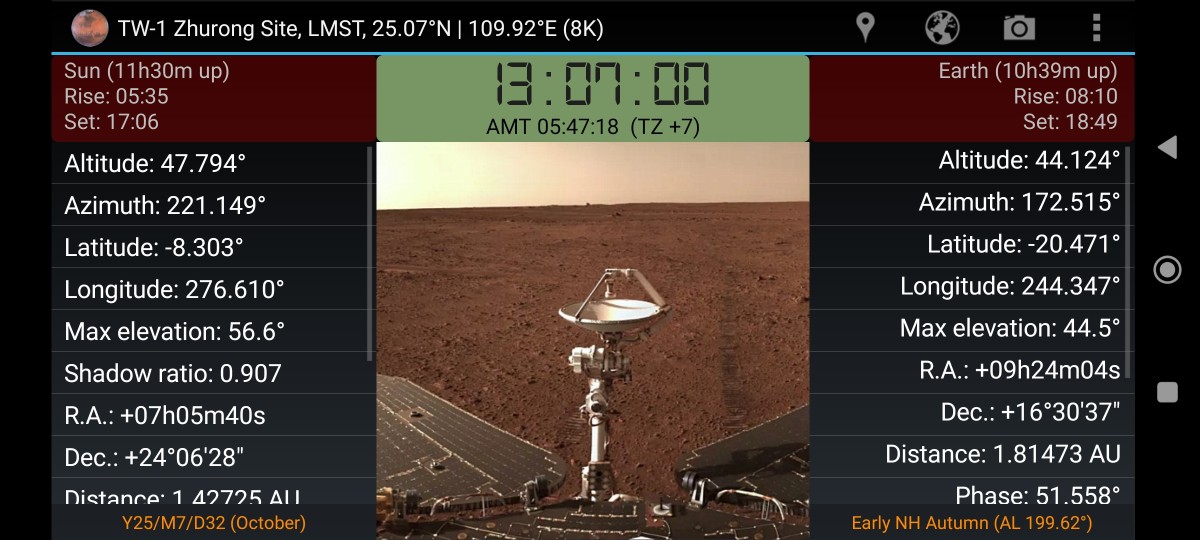
Two surface texture map sizes are included each for Mars and Earth. If the device can't load the hires maps, 8k for Mars and 4k for Earth, it will load a 4k map and a 2k map, respectively. The smaller maps consume less memory and CPU power for older devices.
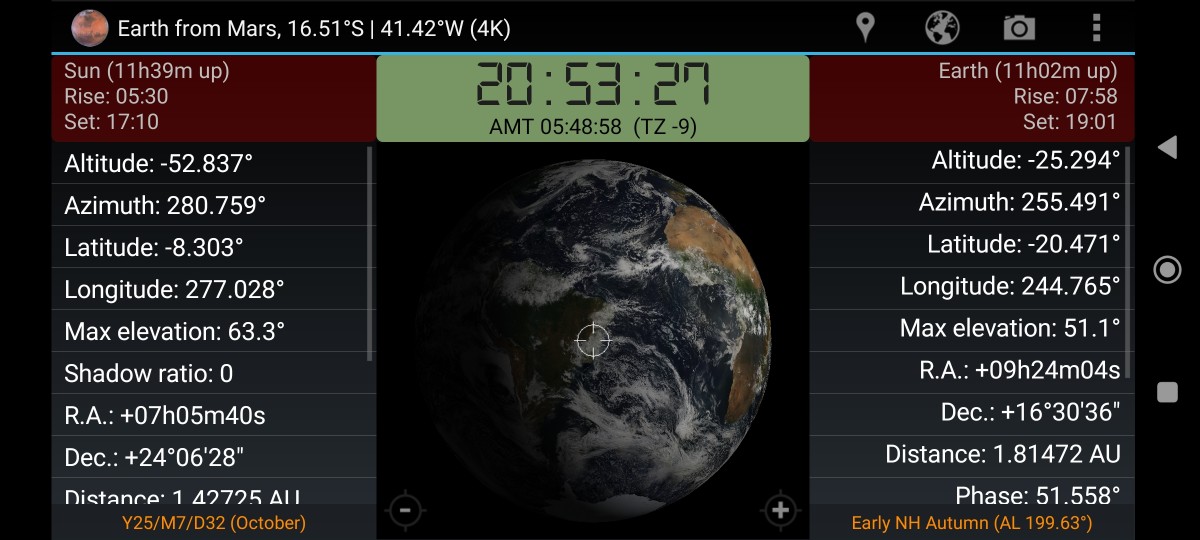
The default location at first start is the Airy crater at null meridian. Tap on the time display to toggle between three time definitions:
- Local Mean Solar Time, LMST, artificially defined with reference a Fictitious Mean Sun, as if Mars' orbit was circular.
- Local True Solar Time, LTST, adds to LMST the equation of time varying between -51.1 and +39.9 minutes.
- Local Mean Zonal Time, LMZT, 24 zones, 15° each, analog to time zones on Earth.
The small time underneath always shows AMT, Airy Mean Time (LMST at 0°), analog to GMT on Earth. AMT is also referred to as MTC, Martian Coordinated Time, analog to UT on Earth.
Tap on the leftmost menu icon, to open a list from which to pick a desired location. The globe centers on the selected location. All data is valid for the selected location.
Tap on the Earth icon to show the Earth as seen from Mars (2k or 4k map). Tap again to return to Mars. Tap on the camera icon to show an image representing the selected location. Tap on the image to return to the Mars globe. Tap on the Sun icon to toggle the night shadow of the globe on and off. Tap on the orbit icon to show Mars epehemris data. Note that icons may be hidden on small screens.
The data presented in the left column of the screen refers to the Sun as observed from a selected location, while the right column contains data related to the Earth as observed from a selected location. Ths data is updated every second synchronous to the digital clock at the center top.
There are four icons one in each corner of the globe window. The top right, key, unlocks the globe for free movement. The icon is removed until a fixed location is selected. The plus icon at the bottom right zooms in. Tap and hold to jump to maximum zoom. Likewise does the minus icon at the bottom left operate. When using plus/minus another icon appears at the top left. This is for resetting the globe view.
Enjoy time keeping on Mars.
Jovian Widget
It is still a long way to Jupiter opposition on Sep 26 this year but it can't harm to get ready. Here is a simple Jovian widget for Android screens. In the meantime working on an App with more precise simulations.
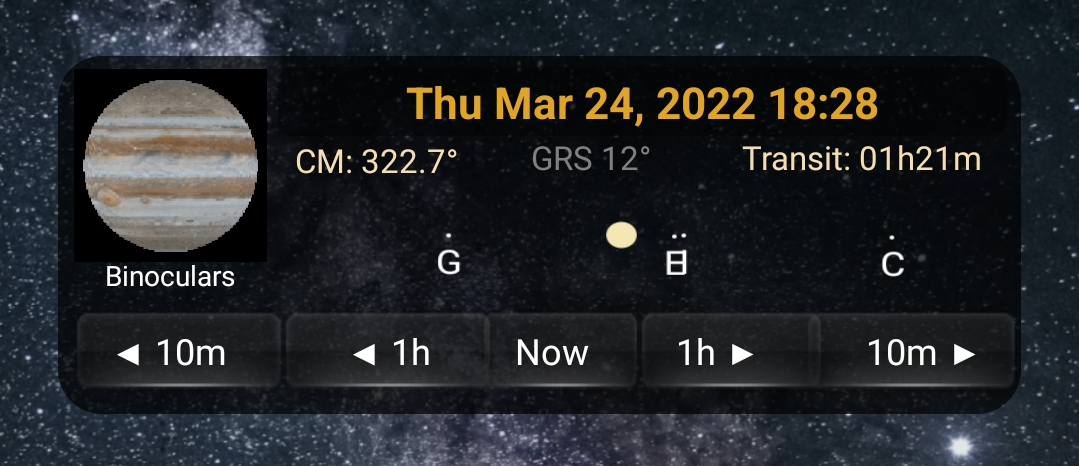
JWST Position and Widget
This application has the JWST position data for any day in 2022 and 2023. The position is also plotted on a DSS image and a star chart (online) and can be enlarged in landscape mode. The software is the first roll-out and may still be buggy.
Astronomy Widgets
A collection of free screen widgets for Android devices.
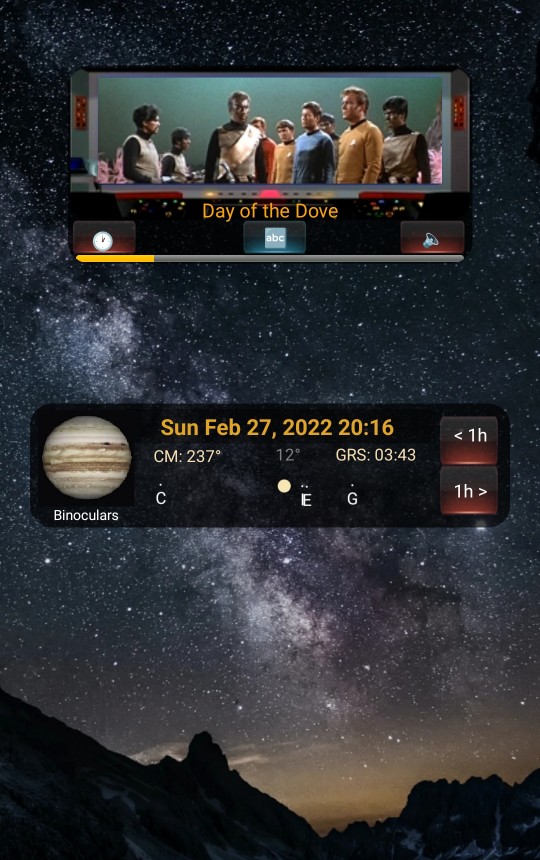
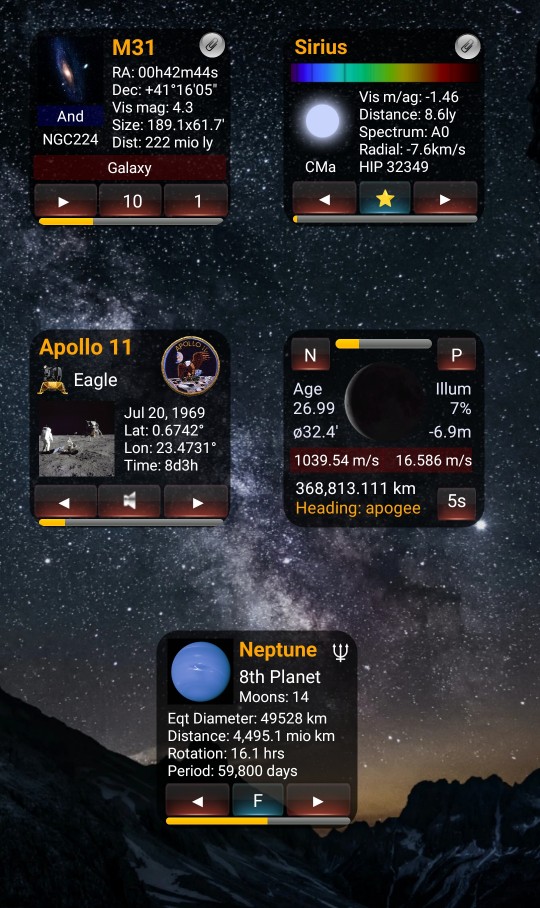
Apollo Missions
Download APK (1.9 MB)
Jovian Satellites
Download APK (4.9 MB)
JWST Position
Download APK (5.3 MB)
Messier Catalog
Download APK (5.3 MB)
Lunar Odometer
Download APK (0.7 MB)
Voyager 1 & 2
Download APK (2.5 MB)
Solar System Browser
Download APK (1.2 MB)
Bright Stars Catalog
Download APK (0.7 MB)
Star Trek TOS
Download APK (2.1 MB)


